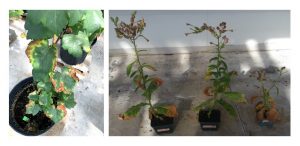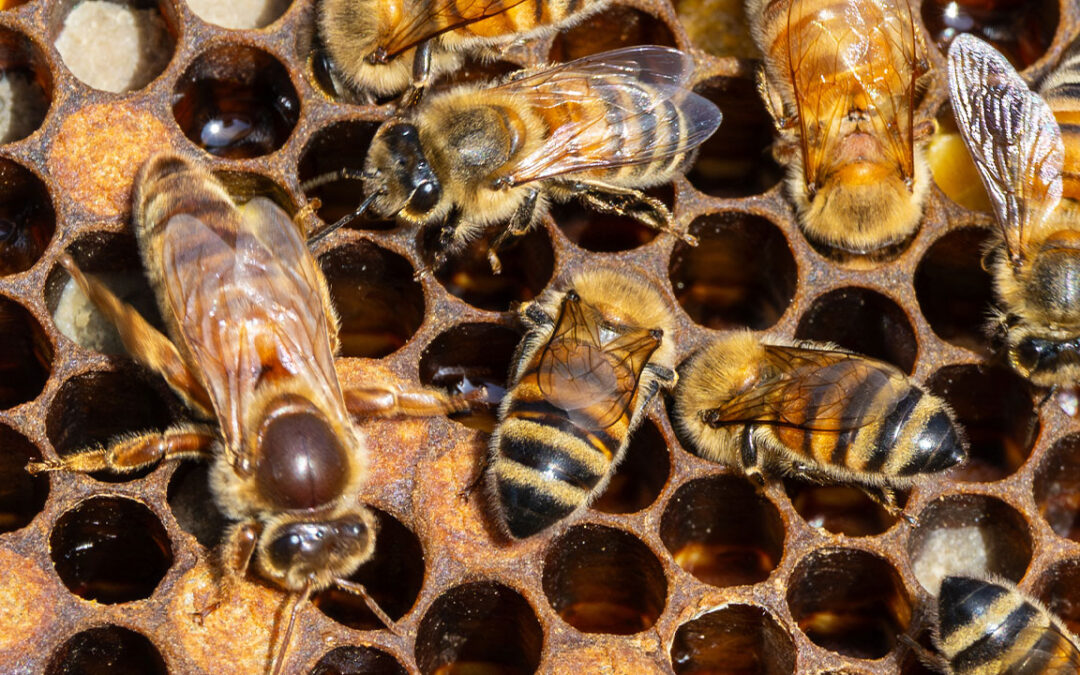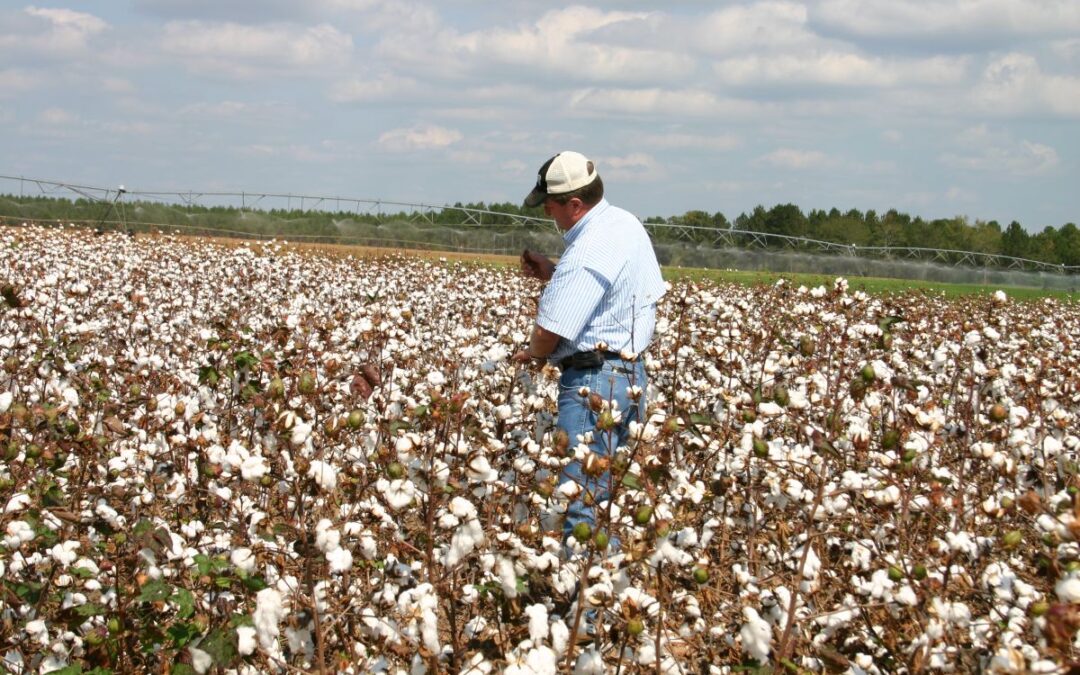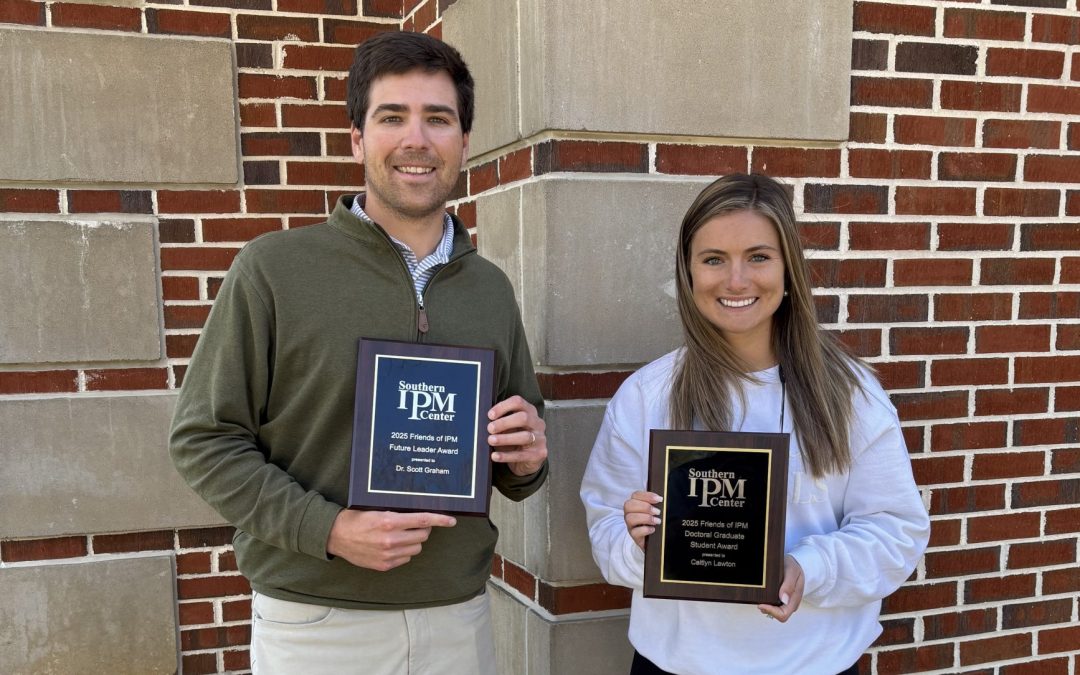De La Fuente Lab
Welcome to Dr. Leonardo De La Fuente’s laboratory, Professor in Auburn’s Department of Entomology & Plant Pathology.
Lab Activities
Current Research Projects
Systemic formulations of antibacterial nanoparticles for Pierce’s disease
Disease management tools are very limited against Pierce’s Disease in grapes, caused by the bacterial pathogen Xylella fastidiosa. The only chemical control options available against this disease, however, target the insect vectors and not the pathogen. There are no antibacterial compounds effective in planta against X. fastidiosa, because of the difficulty of reaching the vascular system by spray applications. We have tested a novel nano-size formulation (“Zinkicide®, ZnK”) [https://zinkicide.org/] against a different vascular (phloem) bacterial pathogen in citrus. That formulation showed effective reduction of Huanglongbing (HLB) symptoms in citrus in Florida. We have carried out preliminary tests of the same formulation against X. fastidiosa in the greenhouse with promising results in blueberry and tobacco. In our experiments, ZnK significantly reduced symptoms and pathogen populations. Based on these results, we propose to modify the chemical composition of the nano-formulation to improve performance against X. fastidiosa at lower doses and to test it in grapes. The availability of an antibacterial chemical treatment easily applied in the field by soil drench or foliar spray will be a useful tool to be adopted by growers to manage Pierce’s Disease.
PROJECT COLLABORATORS:
Swadeshmukul Santra
Professor, NanoScience Technology Center, Department of Chemistry, Department of Materials Science and Engineering & Burnett School of Biomedical Sciences, University of Central Florida (UCF), Orlando, FL
Lindsey Burbank
Research Plant Pathologist, USDA-ARS, San Joaquin Valley Agricultural Sciences Center, Parlier, CA
PROJECT FUNDED BY:
California Department of Food and Agriculture, PD/GWSS program
CALCIUM REGULATION OF INTERACTIONS BETWEEN A XYLEM-INHABITING PATHOGENIC BACTERIUM & HOST PLANTS
Calcium regulation of interactions between a xylem-inhabiting pathogenic bacterium and host plants
The bacterium Xylella fastidiosa causes destructive diseases in crops such as grapes, citrus, blueberries and others. These diseases are found mainly in the Americas, but there have been recent reports of this bacterium causing problems in Asia and Europe. This bacterium, transmitted among plants by insect vectors, lives inside the xylem vessels, which are the components of the vascular system of the plant involved in transporting water and mineral nutrients from the soil to the rest of the plant. Inside the xylem the bacterium forms biofilms, or agglomerates of bacteria surrounded by a sticky matrix, that clogs the passage of nutrients in the plant and is believed to be responsible for the development of symptoms. Currently there is no cure for the diseases caused by Xylella fastidiosa, and infected plants need to be removed and discarded.
Our research has shown that one particular mineral element, calcium, has an important role during the disease development, by increasing the virulence of the bacterium, and being accumulated in infected plants. Our data indicates that the plant defense response to infection may worsen the disease, analogous to what occurs in autoimmune diseases in animals. During this project we will elucidate the key proteins in both plant and bacteria that are involved in the calcium modification occurring during disease. This information will allow us to target those proteins for specific disease control methods.
PROJECT COLLABORATORS:
Paul Cobine and Aaron Rashotte (Department of Biological Sciences, Auburn University)
Mickael Malnoy (Fondazione Edmund Mach)
PROJECT FUNDED BY:
NIFA-AFRI Foundational Program
TRANSCRIPTIONAL REGULATION OF CALCIUM AMONG ANIMAL & PLANT PATHOGENIC BACTERIA STUDIED IN A MICROFLUIDIC MODEL SYSTEM
Transcriptional regulation of calcium among animal and plant pathogenic bacteria studied in a microfluidic model system.
Through an interdisciplinary collaboration among bacterial pathologists working in diverse systems, we will elucidate the molecular basis of the regulatory effect of calcium (Ca2+) on biofilm formation and virulence. Previous work by our groups have identified that Ca2+ regulates virulence traits of bacterial pathogens. To understand the basis of this regulation we will describe the whole transcriptome of plant (Xylella fastidiosa), fish (Flavobacterium columnare) and human (Staphylococcus aureus) pathogens in their response to increasing Ca2+ concentrations. We will study this regulation by establishing a versatile and novel model system utilizing microfluidic chambers (MC). The long term research objective of our team is to test the hypothesis that responses of diverse bacterial pathogens to Ca2+ are regulated by a genetic network that affects virulence. During this research we will identify genes transcriptionally regulated by Ca2+ using an RNA-Seq approach. The long-term applied goal of this research is to develop specific inhibitors for Ca2+-regulated proteins (identified via the proposed research) to use in human, animal, and plant disease management.
PROJECT COLLABORATORS:
Covadonga Arias (School of Fisheries, Aquaculture, and Aquatic Sciences, Auburn University)
Peter Panizzi (Harrison School of Pharmacy, Auburn University)
PROJECT FUNDED BY:
AU-IGP (Auburn University Intramural Grants Program)
Infection traits & growth of "Candidatus Liberibacter asiaticus" inside microfluidic chambers
The bacterium ‘Candidatus Liberibacter asiaticus’ (LAS) is the suspected causal agent of the disease known as citrus greening (or huanglongbin), affecting citrus production worldwide, especially in Florida (US), Brazil, and China. Culturing LAS in the laboratory by traditional bacterial culture methods is extremely difficult. This has caused a knowledge deficit regarding LAS biology that inhibits the generation of well-informed ideas for pathogen control. We are starting a new project based on the use of a novel methodology which uses microfluidic chambers and microscopic observations to improve the culture conditions of LAS and confirm infection traits and nutritional requirements suggested by the recent full genome sequence.
Project Funded By:
- FCPRAC (Florida Citrus Production Research Advisory Council)
Copper (Cu) homeostasis in Xylella fastidiosa
Xylella fastidiosa is a gram negative, xylem-limited plant pathogenic bacterium that causes diseases in many economically important crops worldwide including grape, citrus and olives. Cu as an antimicrobial compound is widely-used in plant diseases control since the 1880’s. Although Cu-containing antimicrobials are not generally used directly in the management of diseases caused by X. fastidiosa, these compounds are widely applied to X. fastidiosa hosts in vineyards and orchards. Cu accumulation in the soils of those fields is relatively high after years of spray, which lead to X. fastidiosa exposure to high Cu concentrations in the xylem. Although the effects of Cu have been extensively studied for foliar pathogen control, it is still unknown what effects Cu has on a xylem-inhabitant pathogen. Previous results from our group showed that Cu influences X. fastidiosa growth in vitro, which includes biofilm formation, and cell-cell adhesion. In this project, our group aims to understand the influence of Cu on X. fastidiosa growth in planta and on its virulence, as well as to unveil the molecular mechanisms of Cu tolerance/resistance in X. fastidiosa.
Geographic distribution of isolate virulence in Xylella fastidiosa collected from grape in California & its effect on host resistance

Pierce’s Disease (PD), caused by Xylella fastidiosa (Xf) has economically affected the California grape industry for over a century. Growers lose an estimated $56 million annually in decreased production and vine replanting. Breeding efforts have resulted in new wine grape cultivars using a single source of PD resistance. This source has been effective against a few strains of Xf, but its durability in the field is unclear. The range in virulence (amount of disease a given isolate can cause) of Xf in California is not known, and regional differences appear likely. Research is being conducted to better understand the variability of Xf in California and how this might impact PD resistant grapes. This proposal will evaluate Xf virulence and the sustainability of PD resistant material.
Funding:
California Department of Food and Agriculture
Collaborators:
Rachel P. Naegele, USDA ARS (USDA-ARS)
https://www.ars.usda.gov/people-locations/person/?person-id=51292
Rodrigo P. P. Almeida (Department of Environmental Science, Policy & Management, UC Berkeley) https://nature.berkeley.edu/almeidalab/
ENPP News

U.S. Beekeeping Survey reveals highest honey bee colony losses during 2024-2025
The annual U.S. Beekeeping Survey results are in for the 2024-2025 calendar year. In collaboration with Auburn University, the Apiary Inspectors of America, Oregon State University and others, the national survey estimated that 55.6% of managed honey bee colonies were...

Understudied cotton is the focus of Auburn University research on seedling diseases
Cotton is undoubtedly one of the most recognizable plants in the world, with its heart-shaped leaves and branches that explode into powder-white fruit. But it’s also one of the more understudied field crops. “Previously, it was unclear where and which specific...

Pest management solutions: Faculty and students receive regional recognition
Auburn University graduate students and one faculty member rose above and beyond for this year’s Southern Integrated Pest Management (IPM) Awards. For the first time, two Auburn doctoral candidates, Caitlyn Lawton and Rogan Tokach, were honored for their achievements...
